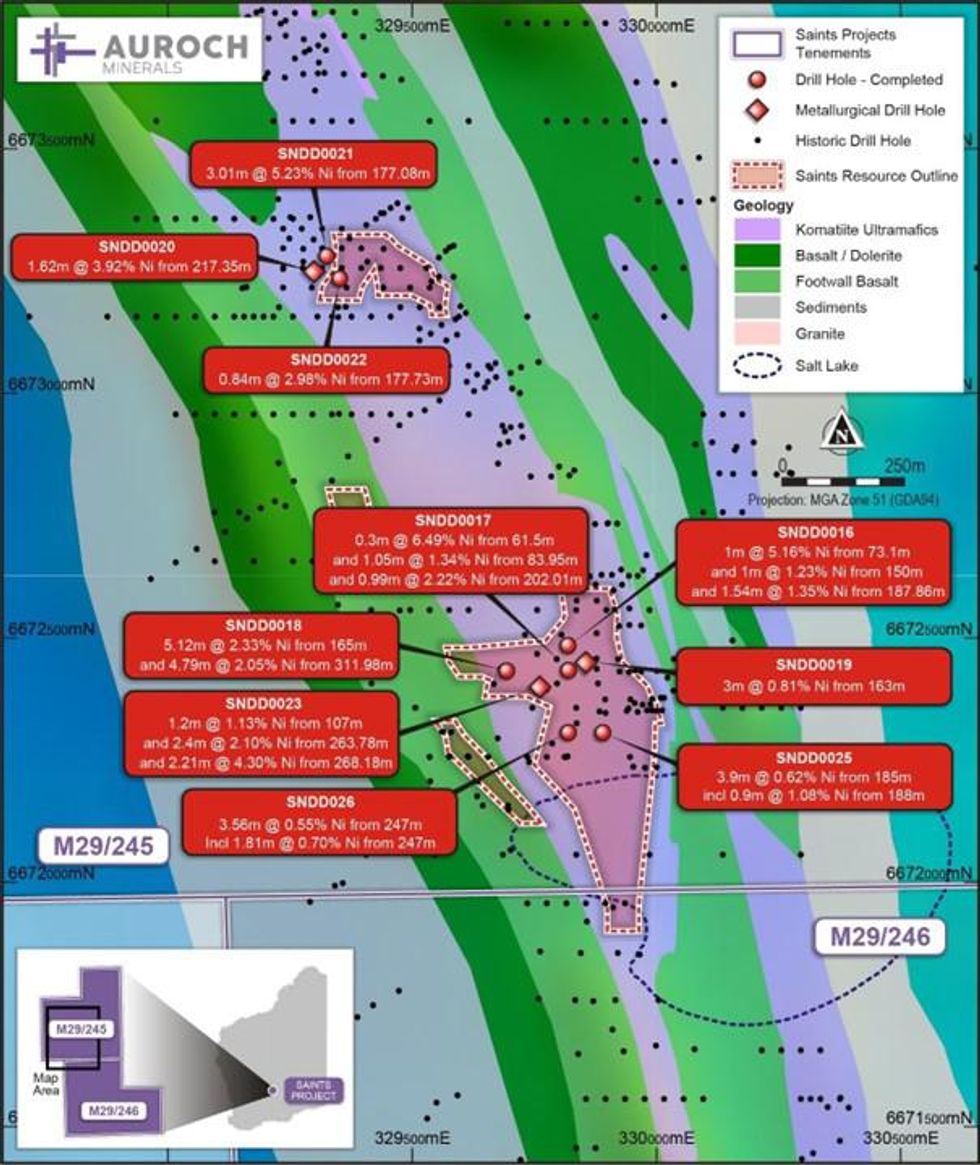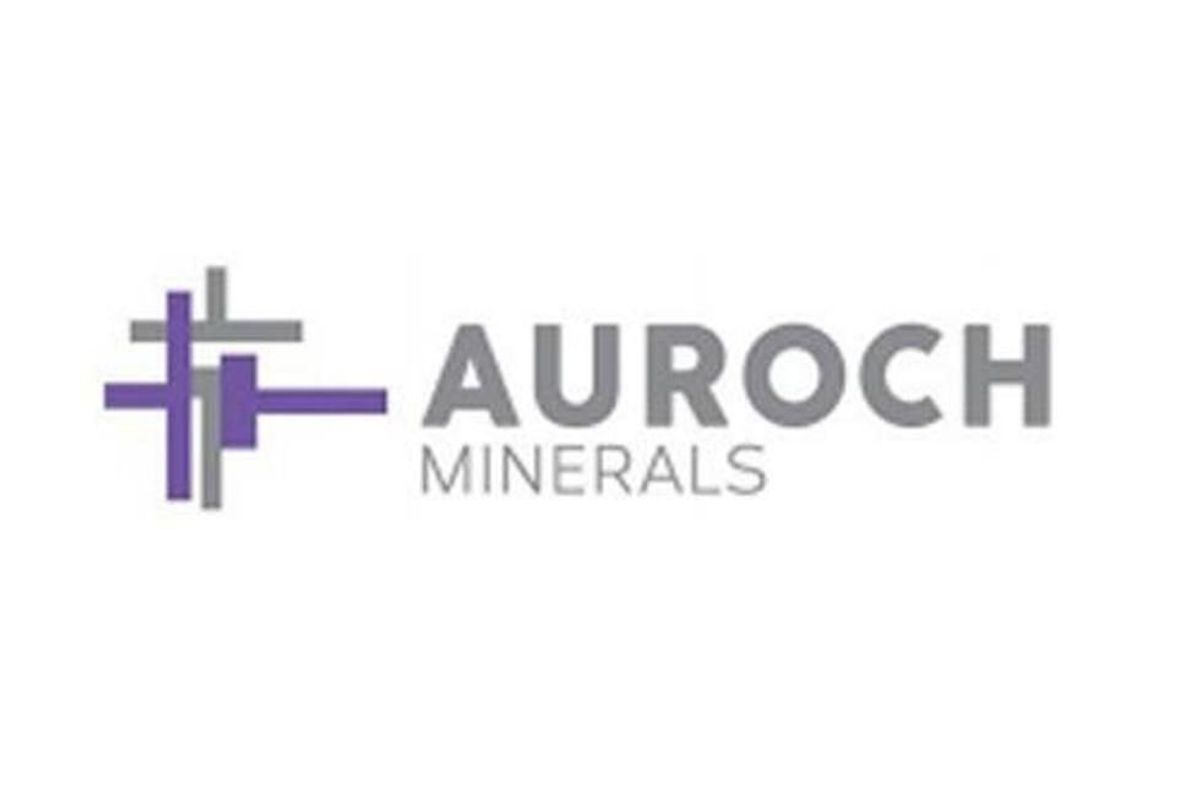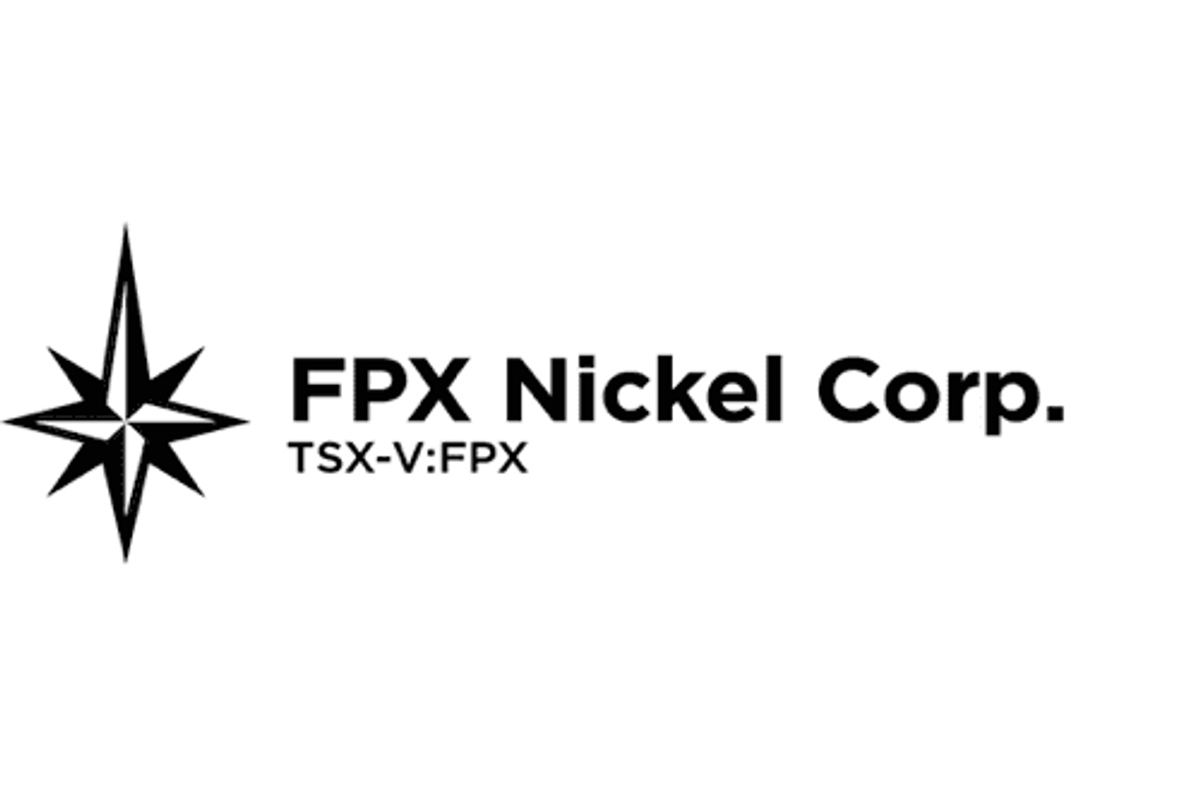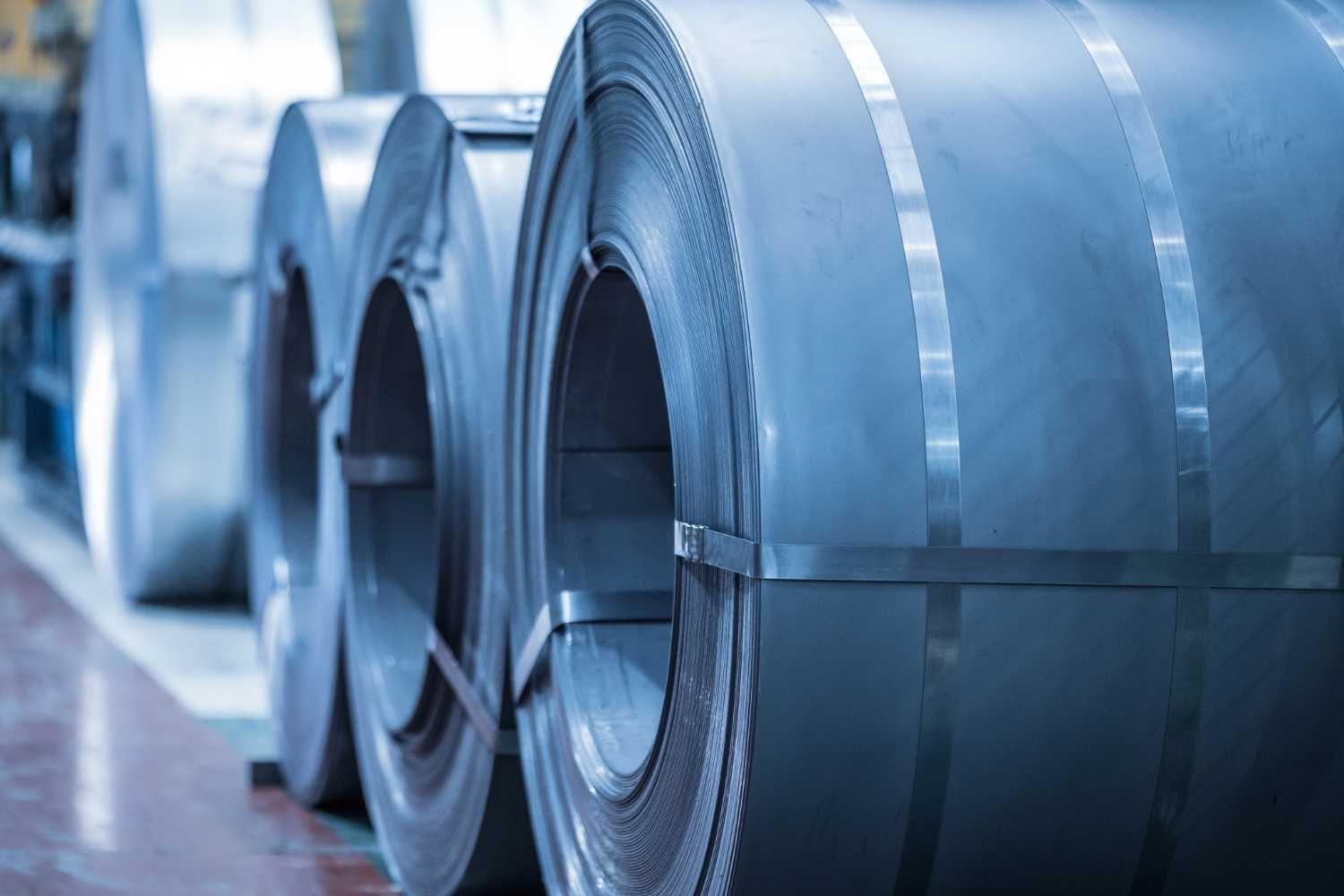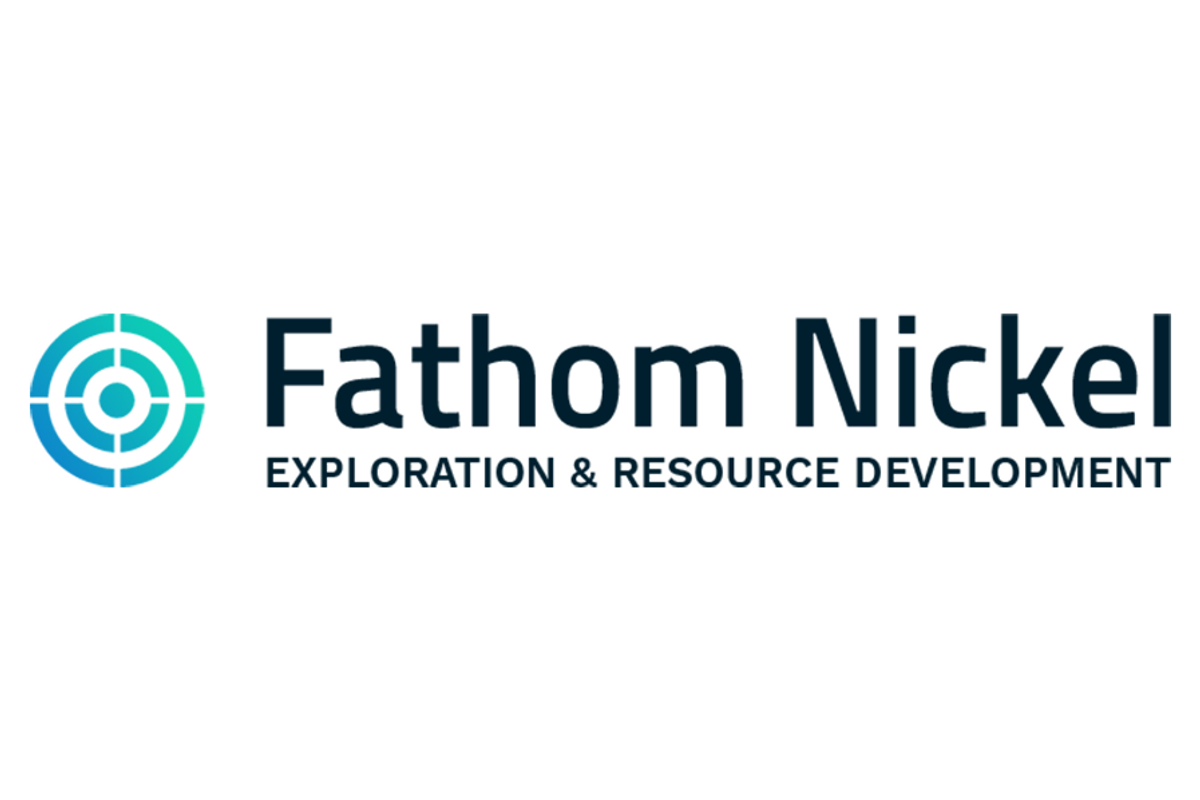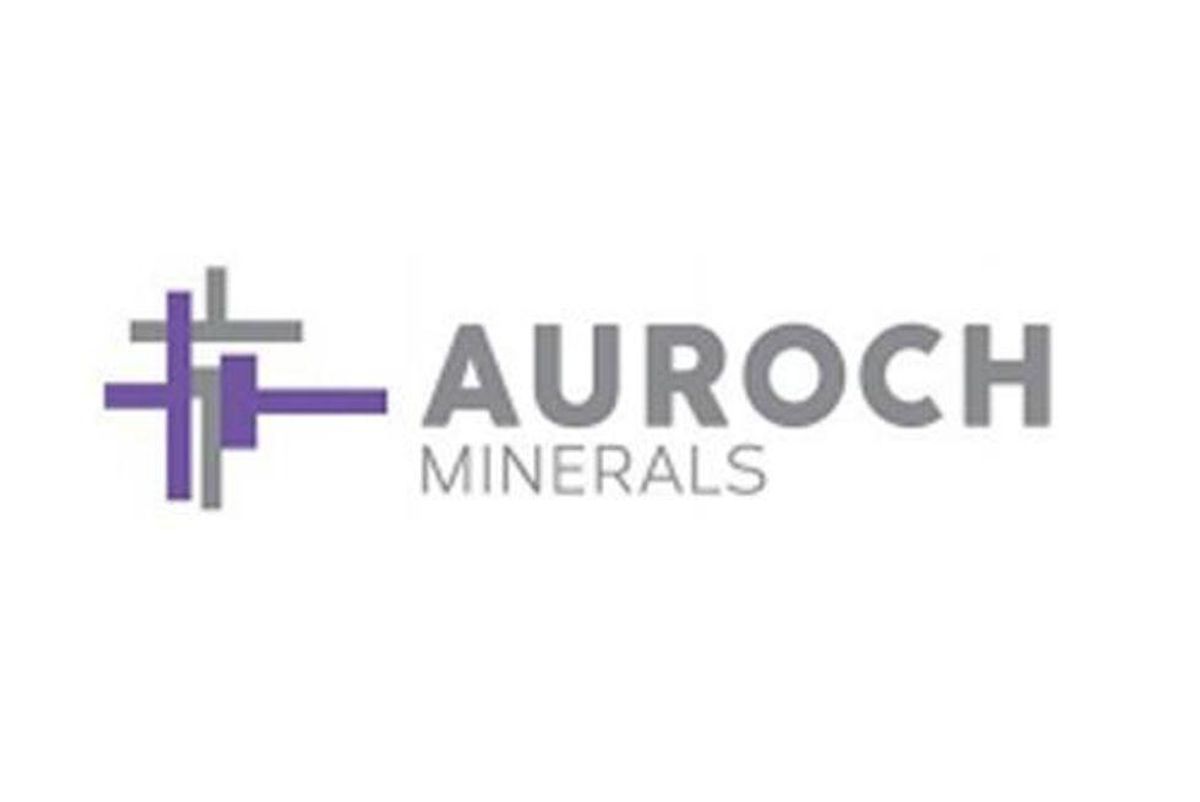
- WORLD EDITIONAustraliaNorth AmericaWorld
July 06, 2022
Auroch Minerals Limited (ASX:AOU) (Auroch or the Company) is pleased to provide an update on the work programmes at its 100%-owned Saints Nickel Project (Saints) in Western Australia.
Highlights
- All assay results from the Saints infill drill programme have now been received, confirming high-grade massive and semi-massive nickel-copper sulphides
- Results will be used in an upgrade of the Saints Mineral Resource Estimate (MRE), which is underway and expected to be completed in approximately 4 to 6 weeks
- The update in the Saints MRE is focussed on using the information from the infill drilling to upgrade a large portion of the current Saints Mineral Resources of 1.02Mt @ 2.0% Ni for 21,400t of contained nickel 1 from an Inferred Resource to an Indicated Resource category
- Excellent interim results received from the metallurgical testwork on the Saints nickel sulphide mineralisation, producing nickel concentrate grades of up to 24% Ni
All outstanding assay results have been received from the infill diamond drill programme completed earlier this year. All drill-holes intersected nickeliferous massive or semi-massive sulphides (refer to Figures 1 & 2), with significant intersections including (see Table 1 for full table of results):
- SNDD021: 3.01m @ 5.23% Ni, 0.69% Cu, 0.77g/t PGE from 177.08m;
- SNDD023: 2.40m @ 2.10% Ni, 0.14% Cu, 0.09% Co, 0.36g/t PGE from 263.78m and 2.21m @ 4.30% Ni, 0.37% Cu, 0.13% Co, 0.58g/t PGE from 268.18m;
- SNDD016: 1.00m @ 5.16% Ni, 0.06% Cu, 0.09% Co, 0.56g/t PGE from 73.10m; and
- SNDD020: 1.62m @ 3.92% Ni, 0.42% Cu, 0.11% Co, 0.70g/t PGE from 217.35m. 2
Following the receipt of the final outstanding assays, the Company has initiated an update of the Mineral Resource Estimate (MRE) on the Saints Nickel Project, contracting experienced resource geologist Shaun Searle from Ashmore Advisory Pty Ltd to complete the work.
The update of the Saints MRE is focussed on using the assay results and geological information from the infill drilling to upgrade a large portion of the current Saints Mineral Resource of 1.02Mt @ 2.0% Ni for 21,400t of contained nickel 1 from an Inferred Resource to an Indicated Resource category. The expected upgrade in resource classification is a critical step in the Saints Scoping Study and will result in a higher level of confidence in the financial modelling of the potential underground mining scenario. The MRE upgrade is expected to be completed within the next four to six weeks.
The Company is also pleased to announce that it has received excellent interim results from the ongoing metallurgical testwork on the nickel sulphide mineralisation at Saints. Strategic Metallurgy Pty Ltd has completed a first-pass test of two bulk composite samples from the recent drilling, one from the Saint Patricks mineralisation and the other from Saint Andrews, following the traditional flow sheet of “Kambalda-style” nickel sulphide deposits.
Both metallurgical samples produced very good concentrate grades over 14%, with initial concentrate grades up to 24% Ni and 5% Cu. Importantly, the iron to magnesium ratio is also very good (Fe:MgO >10 and >22, respectively), the cobalt grade and recoveries are good (>0.5% Co) and there is no arsenic (As) in the material.
The testwork will now focus on improving the recoveries, as there were still nickel sulphides observed in the tailings of both initial tests. The final results for the Saints metallurgical testwork are expected in the next four to six weeks and will provide further critical inputs into the Saints Scoping Study.
Auroch Managing Director Aidan Platel commented:
“We are extremely encouraged with the initial results from the metallurgical testwork at Saints. The tests have shown that the sulphide mineralisation at both Saint Patricks and Saint Andrews can produce a very clean, high-grade nickel-copper-cobalt concentrate with excellent Fe:MgO ratios, which would make it a desirable ore source for any nickel sulphide beneficiation facility in the region.
We are also pleased to have commenced work on upgrading the MRE at Saints. These two work streams will provide critical inputs into the Saints Scoping Study and, importantly, will result in a higher level of confidence in our financial modelling of the potential underground mining scenario at Saints. We look forward to the results of this work and to finalising the Scoping Study later this quarter.”
Figure 1 – Long-section (looking east) of the current modelled resource at the Saints Nickel Project showing intersected pierce points and significant intersections from recent diamond drill programme
Figure 1 – Map of the Saints Nickel Project showing results from the recent diamond drill programme against interpreted geology, historic drill-holes and resource outline
This announcement has been authorised by the Board of Directors of the Company.
Click here for the full ASX Release
This article includes content from Auroch Minerals, licensed for the purpose of publishing on Investing News Australia. This article does not constitute financial product advice. It is your responsibility to perform proper due diligence before acting upon any information provided here. Please refer to our full disclaimer here.
AOU:AU
The Conversation (0)
23 September 2021
Auroch Minerals
Exploring High-Grade Nickel Sulfides in Western Australia
Exploring High-Grade Nickel Sulfides in Western Australia Keep Reading...
03 November
Top 5 Canadian Nickel Stocks of 2025
Nickel prices have experienced volatility in the past few years due to supply and demand uncertainty. While demand has been consistent, prices have been mainly influenced by structural oversupply stemming from high output from Indonesia, which rapidly increased output in recent years to become... Keep Reading...
29 October
Nickel Price Update: Q3 2025 in Review
Nickel prices were volatile in the first half of 2025, but evened out in Q3 amid ongoing oversupply concerns.The market has also faced considerable uncertainty as the US adjusts its trade and spending policies, with headwinds coming from the end of the country's electric vehicle (EV) tax credit... Keep Reading...
16 September
FPX Nickel Announces Funding Contribution from Natural Resources Canada to Advance the Baptiste Nickel Project
FPX Nickel Corp. (TSXV: FPX), (OTCQB: FPOCF) ("FPX" or the "Company") is pleased to announce that it has been awarded a total of $3.5 million from Natural Resources Canada's Critical Minerals Infrastructure Fund ("CMIF"). The confirmed funding is a non-repayable contribution to support the... Keep Reading...
Latest News
Latest Press Releases
Related News
TOP STOCKS
American Battery4.030.24
Aion Therapeutic0.10-0.01
Cybin Corp2.140.00

